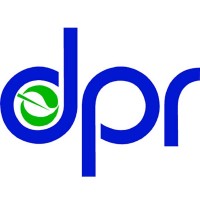Information on Malathion
Find information on the registration status, continuous evaluation and mitigation measures in California to regulate this active ingredient. An active ingredient is the chemical that makes a pesticide work on a target pest.
Active Ingredient: Malathion
Type of Pesticide: Insecticide
California Registration: Yes
EPA Registration: Yes
Fumigant: No
California Restricted Material: No
Toxic Air Contaminant (TAC): No
Volatile Organic Compound (VOC): No
Potential Groundwater Contaminant: Yes
Reevaluation Status: None
Chemical Class: Organophosphate
DPR Chemical Code: 367
Risk Evaluation and Mitigation Documents
- February 2016 - Ambient Monitoring Report
- March 2010 - ENF 2010-04 - Updates to Volume 3, Restricted Materials and Permitting, Pesticide Use Enforcement Program Standards Compendium
- April 2007 - ENF 2007-015 - 2007 Rice Pesticides Program
- March 2006 - ENF 2006-008 - Rice Pesticides Program 2006
- March 2005 - ENF 2005-015 - Rice Pesticides Program 2005
- April 2004 - ENF 2004-006 - Rice Pesticides Program 2004
- March 2003 - ENF 2003-011 - Rice Pesticides Program 2003
- April 2002 - ENF 2002-012 - Rice Pesticides Program for 2002
- April 2001 - ENF 2001-017 - Rice Pesticides Program for 2001
Historic Documents
- October 2016 – Use Information and Air Monitoring Recommendation for the Organophosphate Pesticide Active Ingredients Chlorpyrifos, Diazinon, and Malathion: Seasonal Ambient Air Monitoring Studies in Kern County, Fresno and Tulare Counties, and Imperial County
- April 2004 – Forensic Review and Sampling of PPE/Respiratory Protective Equipment Associated with Priority Investigation 3-RIV-04
- June 2003 – Human Subjects Protocol No. HS-03-021 (Influence of Moisture on the Transferability of Malathion Applied on Strawberries)
- March 2003 – Report of Ambient Air Monitoring for Pesticides in Lompoc, California
- August 2002 – Rice Pesticides Monitoring Data, Final Update
- June 2002 – Rice Pesticides Program Monitoring Data, First Update
- November 2001 – Hand Residue Sampling Methods Validation: Project 9901
- July 2001 – ENF 2001-034 – Unreported and Prohibited Use of Malathion and Bentazon
- February 1999 – Final Report for the 1998 Malathion Air Monitoring
- 1998 – Hazard Assessment of the Insecticide Malathion to Aquatic Life in the Sacramento-San Joaquin River System
- December 1997 – Environmental Monitoring Results of the Mediterranean Fruit Fly Eradication Program, Ventura County, 1994-95
- September 1996 – Environmental Monitoring Results of the Mediterranean Fruit Fly Eradication Program, Riverside Count 1994
- June 1996 – Physiologically-Based Pharmacokinetic (PB-PK) Modeling for Dermal Absorptions of Pesticides (Malathion) in Man
- 1996 – Use of Spot Urine Sample Results in Physiologically Based Pharmacokinetic Modeling of Absorbed Malathion Doses in Humans (Published in Biomarkers for Agrochemicals and Toxic Substances)
- August 1995 – Removal of Malathion Residues from Lettuce for Medfly Eradication Projects
- April 1995 – Validation of a Physiologically Based Pharmacokinetic (PB-PK) Model Used to Simulate Absorbed Malathion Doses in Humans
- November 1994 – Estimating Malathion Doses in California's Medfly Eradication Campaign Using a Physiologically Based Pharmacokinetic Model (ACS Advances in Chemistry Series 241)
- February 1993 – Dietary Exposure Assessment
- April 1991 – Situational Chemical Exposure Studies Provide Human Metabolism and Urine Clearance Data for Chlorpyrifos, Dimethoate, and Malathion
- March 1991 – Environmental Monitoring of Malathion Aerial Applications Used to Eradicate Mediterranean Fruit Flies in Southern California, 1990
- May 1989 – Worker Exposure to Malathion, Sulfur, and Nuisance Dust During Date Harvest
- October 1987 – Exposure Assessment Document
- July 1987 – Risk Characterization Document
- April 1982 – A Characterization of Sequential Aerial Malathion Applications in the Santa Clara Valley of California, 1981
- September 1976 – Human Health and Safety Problems Occurring in California During 1975 Involving Employed Persons Using Malathion
